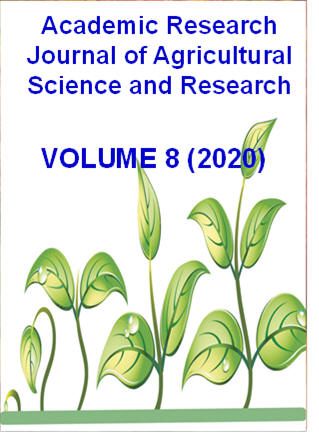|
ISSN: 2360-7874 |
Academic Research Journal of
Agricultural Science and Research |
|||||||||||||||||||
|
Vol. 8(5), pp. 447-452, June 2020 Review Impact of monocropping for crop pest management: Review
Mohammed Aman
Ethiopian Institute of Agricultural Research, Jimma Agricultural Research Centre, P. O. Box 192, Jimma, Ethiopia Corresponding author: E-mail: mohammedaman194@gmail.com
Accepted 17 June 2020
The paper was objected to focus on different issues and revises the impact of monocropping for crop pest management. Monocropping is continuous cropping as the practice of cultivation of the same crop in the same land year after year. Monoculture have it is on advantage in terms of rehabilitating deforested watershed Sand degraded landscapes, ease of management and increasing efficiency. Currently, monocropping is become less practiced and people are diverting toward using multiple cropping due it is several negative social and environmental impacts. According to one study, crop disease was reduced for about 20–40% because of intercropping compared to monocropping. Similarly, in a sorghum-Desmodium intercropping research reported, 100% control of Striga was achieved. Additionally, according to the report of one maize study, early emerging weeds can generate potential grain yield losses up to 35%. Comparing with multiple cropping, monocropping enhances the massive use of herbicides favors’ weed resistance and generates water pollution especially when paired with irrigation and high nitrogen (N) fertilization. Monocropping also increase the impact of insects on crop production, however, their impact is differ from insect to insect based on their feeding habit. Clearly, in many cases multivoltine polyphagous insect populations will decrease with increasing monoculture whereas monophagous insects might increase with increasing monoculture. Furthermore, as indicated on the report of the study, the incidence soil-borne pathogens take-all disease was reduced by maize alfalfa intercropping while monoculture fields require more chemicals to control pests. Overall, currently due to different factors like climate change, the increment of population and pests, people are become diverting their practices toward multiple cropping systems.
Keywords: Disease, Insect, Intercropping, Monocropping, Pest Management, Weed.
How to cite this article (APA Style): Mohammed, A (2020). Impact of monocropping for crop pest management: Review. Acad. Res. J. Agri. Sci. Res. 8(5): 447-452
|
|||||||||||||||||||
